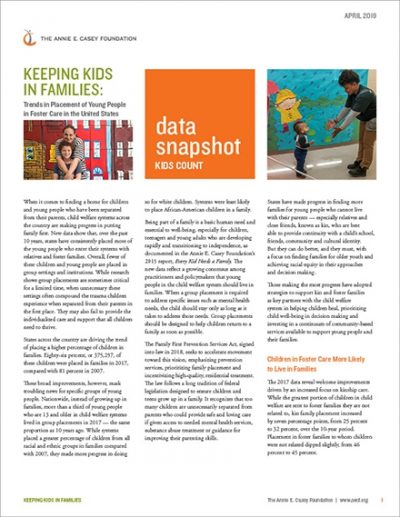Progress Check
Nationwide, the proportion of kids in foster care who were placed in families rose from 81% in 2007 to 86% in 2017.

In this data snapshot, the Annie E. Casey Foundation examines how placements for young people in foster care have changed from 2007 to 2017. Using data from all 50 states and the District of Columbia, Casey finds that child welfare systems are doing a better job of placing kids in families. At the same time, racial disparities persist for kids of all ages and progress eludes teens in care.
To push for further progress, the four-page snapshot tells how states can leverage the federal Family First Prevention Services Act to prioritize family placement and high-quality, family-centered settings to support even better outcomes — and a brighter future — for kids in care.
This Data Snapshot shares four ways that states can leverage the Family First Act to connect more kids in foster care with families.
It recommends: utilizing federally reimbursed services designed to maintain child and family connections when a child enters foster care; prioritizing recruiting and retaining kin and foster families, especially for older youth and youth of color; engaging families in decision making; and requiring approval for non-kin placements.
We hope you'll find value in this report. We’d love to get a little information from you, which we'll use to notify you about relevant new resources.